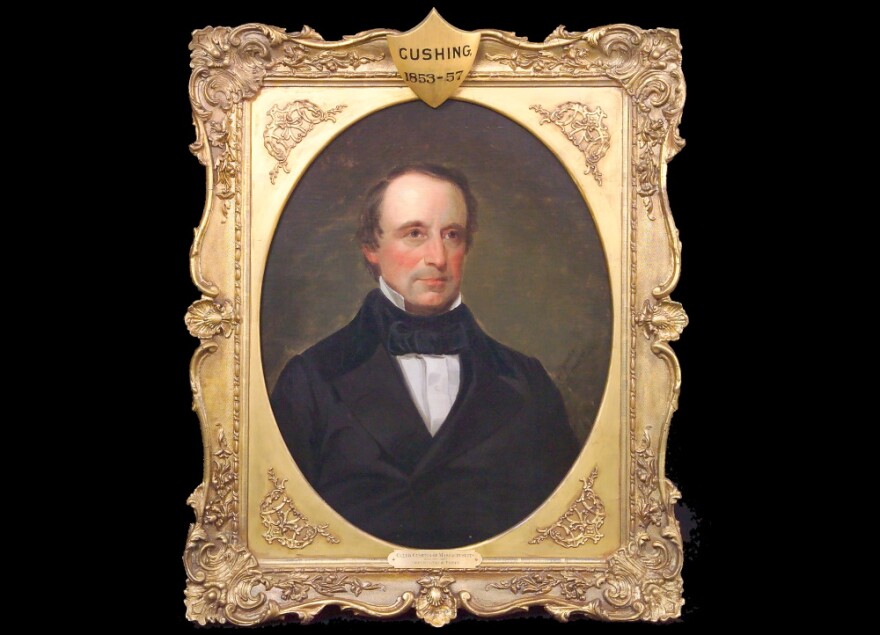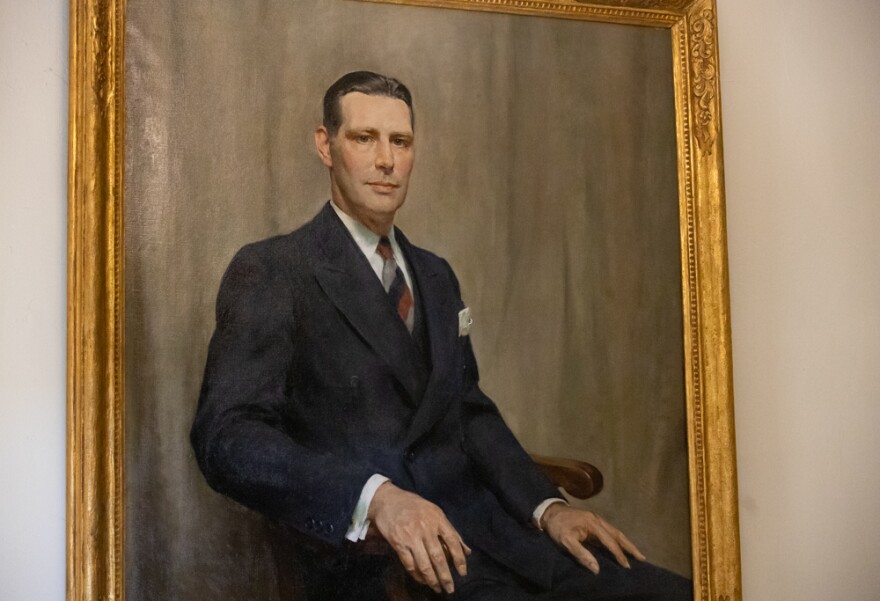Boston Mayor Martin Walsh said during a speech to the city Tuesday night that he is going to bring Boston with him when he goes to Washington, D.C., to serve in the Biden administration as secretary of labor. Whether he intends to pack it or not, Walsh will also have a bit of the Massachusetts House of Representatives in tow.
If he is confirmed by the U.S. Senate, Walsh will be the latest in a line of at least a dozen men to serve in both the Massachusetts House and in a presidential Cabinet.
Most recent on the list was Rep. Andrew Card, a Holbrook Republican who served about eight years in the House in the late 1970s and early 1980s and served as transportation secretary under President George H.W. Bush in 1992 and 1993.
There's also George Meyer, a House speaker in the late 19th century who was postmaster general under President Teddy Roosevelt and secretary of the Navy under President William Howard Taft. Richard Olney spent one term in the House and later served the U.S. as President Grover Cleveland's attorney general and secretary of state.
But Walsh, who was elected to the House in 1997 and served until he was sworn in as Boston mayor in early 2014, would bring a much longer House tenure to his new federal post than any of his predecessors.
From the very first presidential Cabinet to the one that is still in the planning stages, here's a snapshot of some of the people who have both House service and Cabinet service on their resumes:
Henry Knox: General Henry Knox is most well-known for leading the Herculean effort to drag 60 tons worth of cannons and other weaponry from Fort Ticonderoga some 300 miles to Boston in order to fortify Dorchester Heights and force the British to evacuate Boston on March 17, 1776.

The Boston-born bookseller worked closely with George Washington and was named chief of the Continental Army artillery. He then took over command of the United States Army upon Washington's resignation amid demobilization in 1783.
After the Revolutionary War, Knox served the Congress of the Confederation as secretary at war between 1785 and 1789, and was appointed by Washington to serve as the new country's first secretary of war in September 1789. "In this capacity, he developed a plan for a national militia, setting a precedent that guided the new nation's military training for more than a century and a half," according to the National Library for the Study of George Washington.
Knox retired from the Cabinet at the end of 1794 and retired to his mansion in Thomaston, Maine. He did not stray too far from public life and was seated in the Massachusetts House as a representative from the territories that would become the state of Maine in 1820.
"He was induced repeatedly to take a share in the government of the state, both in the house of representatives and in the council — in the discharge of whose several duties, he employed his wisdom and experience with the greatest assiduity. At that time Maine and Massachusetts composed one great and powerful state. His enlarged and liberal policy, as a legislator, was manifested on every question on which he acted, and in every debate in which he took a part," James Thatcher wrote of Knox in his 1862 tome "Military Journal of the American Revolution."
Knox died suddenly in 1806, reportedly of an infection caused when he choked on a chicken bone.
William Eustis: By the time William Eustis became a member of the House of Representatives in 1788, he had been trained under Dr. Joseph Warren and graduated Harvard College, treated the wounded at the Battle of Bunker Hill, and was the surgeon for the militia that was sent to put down Shays' Rebellion. He served in the Massachusetts House until 1794, when he declared himself "sick of the whole of this kind of life."

He chose instead to take up another kind of life: that of a member of the U.S. House of Representatives. Eustis was elected to the Seventh and Eighth Congresses, serving from March 1801 to March 1805. His 1804 reelection campaign unsuccessful, Eustis instead found himself serving on the Governor's Council from May 1807 to December 1808.
When James Madison became president in 1809, he appointed Eustis as his secretary of war. When tensions with Great Britain boiled over in 1812, Eustis found himself trying to run a war on a budget and was criticized greatly for his perceived failings in the early months of the war. He resigned the Cabinet position effective in early January 1813 and the next year was appointed diplomatic envoy to the Netherlands.
Eustis returned to the U.S. House in 1820 to fill a vacancy and was subsequently reelected for another term. Following three unsuccessful attempts, Eustis was elected governor of Massachusetts in 1823 and served until his death from pneumonia in February 1825.
Caleb Cushing: This son of the North Shore entered Harvard at around 13 years old and served multiple stints in the Massachusetts House in the 1820s, 1830s, 1840s, 1850s and 1860s. Cushing was first elected to the House in 1825, served in the state Senate in 1827 and rejoined the House in 1833 and 1834. Cushing was elected to Congress in 1834 and served as a member of the U.S. House from 1835 until 1843. He did not stand for renomination in 1842 and in 1843 was tapped by President John Tyler to be envoy to China.

When his diplomatic service ended in 1845, Cushing returned to the Massachusetts House and commanded the 1st Massachusetts Volunteer Regiment during the Mexican-American War as a colonel. Gubernatorial campaigns in 1847 and 1848 were unsuccessful for Cushing, and he instead returned to the Mass. House in 1850. He turned down the chance to be Massachusetts attorney general in 1851 to instead serve as mayor of Newburyport.
In 1852, Cushing was appointed to the Massachusetts Supreme Judicial Court and in 1853 was appointed U.S. attorney general by President Franklin Pierce. He served in the Cabinet until March 1857 and again returned to the Mass. House in 1858, 1859, 1862 and 1863.
In the late 1860s, Cushing was dispatched to Colombia to help negotiate a treaty for a canal to move ships across the isthmus of Panama. President Ulysses Grant nominated Cushing to be chief justice of the Supreme Court in 1874 but the nomination was quickly withdrawn when it became clear that the Senate would not confirm him. Cushing died in 1879.
Maurice Tobin: Of all the men who have served in the Massachusetts House and a presidential Cabinet, Maurice Tobin has the most in common with Marty Walsh. The Mission Hill native entered politics at 25 when he took a seat in the Massachusetts House in 1927, serving just two years. After years on the Boston School Committee, the protégé of James Michael Curley surprised the political world by challenging his mentor's mayoral bid and beating him in 1937.

The mayor was elected governor of Massachusetts in 1944 and served one term until 1947. "During his tenure, the fair employment practices bill was sanctioned; and workmen's unemployment and compensation benefits were improved," the National Governors Association said of Tobin's term.
After leaving office, Tobin campaigned for Harry Truman and was chosen by Truman to serve as secretary of labor in 1948. The U.S. Department of Labor said its "budget and staff were restored and international responsibilities were strengthened" under Tobin, that he "made effective use of his Trade Union Advisory Committee for International Affairs in mobilizing American unions' support in the rebuilding of war ravaged Europe under the Marshall Plan" and that he consolidated "most of the widely dispersed government labor functions" under his department.
Tobin served as secretary of labor until the end of the Truman administration in early 1953 and died in July 1953.
Martin Walsh: Dorchester's Martin Walsh won his seat in the Massachusetts House in a 1997 special election to replace Jim Brett, who left elected office to lead the New England Council. Walsh had already beaten cancer as a child, worked as a union laborer and become sober. He topped a six-person field that also included Martha Coakley, who would go on to be elected Middlesex County district attorney and Massachusetts attorney general. Another member of the Boston delegation, Tom Finneran, was speaker of the House at the time, but Walsh was in office about six months before he was given anything to do.
By the time Walsh was sworn in, Finneran had already filled every committee seat and it took then-Rep. Patricia Jehlen of Somerville giving up her spot on the Public Safety Committee for Walsh to get his first committee assignment. In his first months as a state rep in 1997, Walsh voted against legislation reinstating the death penalty in Massachusetts and it ultimately failed after Peabody Rep. John Slattery switched his vote and doomed the measure to an 80-80 tie. An early 2004 profile in the Dorchester Reporter said Walsh "still grapples with" that decision, his most high-profile vote to that point. Walsh would face another high-profile decision over the next three years as the House repeatedly debated the issue of gay marriage, a controversial topic for a representative of a district packed with Irish-Catholics.
"I think my support of gay marriage came as a surprise to some people. In many ways it went against expectations," Walsh wrote to mark the 10-year anniversary of the 2007 vote to protect gay marriages in Massachusetts. "But the truth couldn't be farther from those expectations."
During his time in the House, Walsh spent much of his time focused on labor issues, substance abuse funding and delivering for his district. He found himself on the wrong side of the speakership contest when Finneran left — Walsh backed Norwood Rep. John Rogers against Salvatore DiMasi in 2004 — and had his committee chairmanship yanked. He was with Rogers again in 2009 when Winthrop's Robert DeLeo ascended to the speaker's office, but within two years DeLeo had tapped Walsh to chair the House Ethics Committee.
Higher office was never too far from Walsh's mind during his roughly 17 years in the House. In 2008, Walsh told the News Service, "At some point, if the opportunity comes, maybe I'll have the chance to run for higher office. But one thing you learn in politics is you just don't know what's going to happen."
That opportunity came in 2013 when Mayor Tom Menino announced that he would not seek a sixth term in City Hall. Walsh jumped into the race soon after Menino's announcement, was the top vote-getter in the preliminary election and then topped City Councilor at Large John Connolly in the November general election.
When Walsh returned to the House for the first time after winning the election, DeLeo summed up the previous 17 years of serving alongside Walsh.
"You've been a good friend," the speaker said. "You have tested my patience at times — many times actually."









